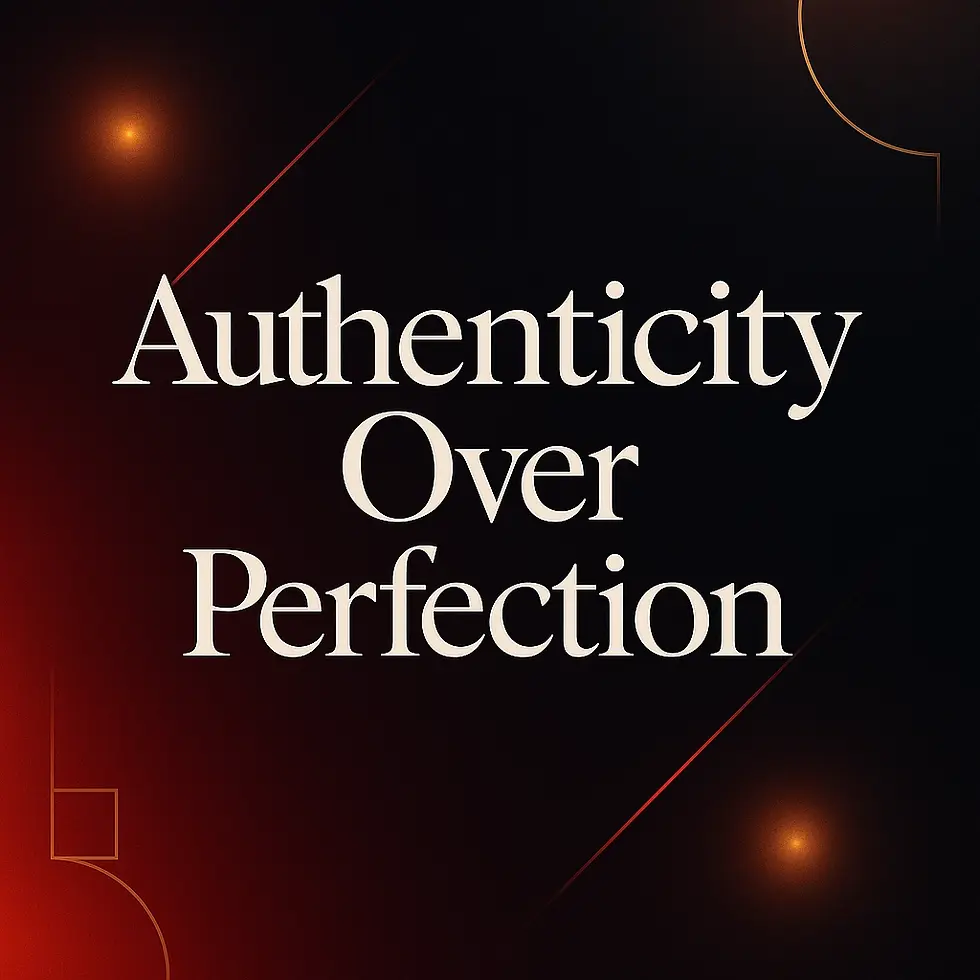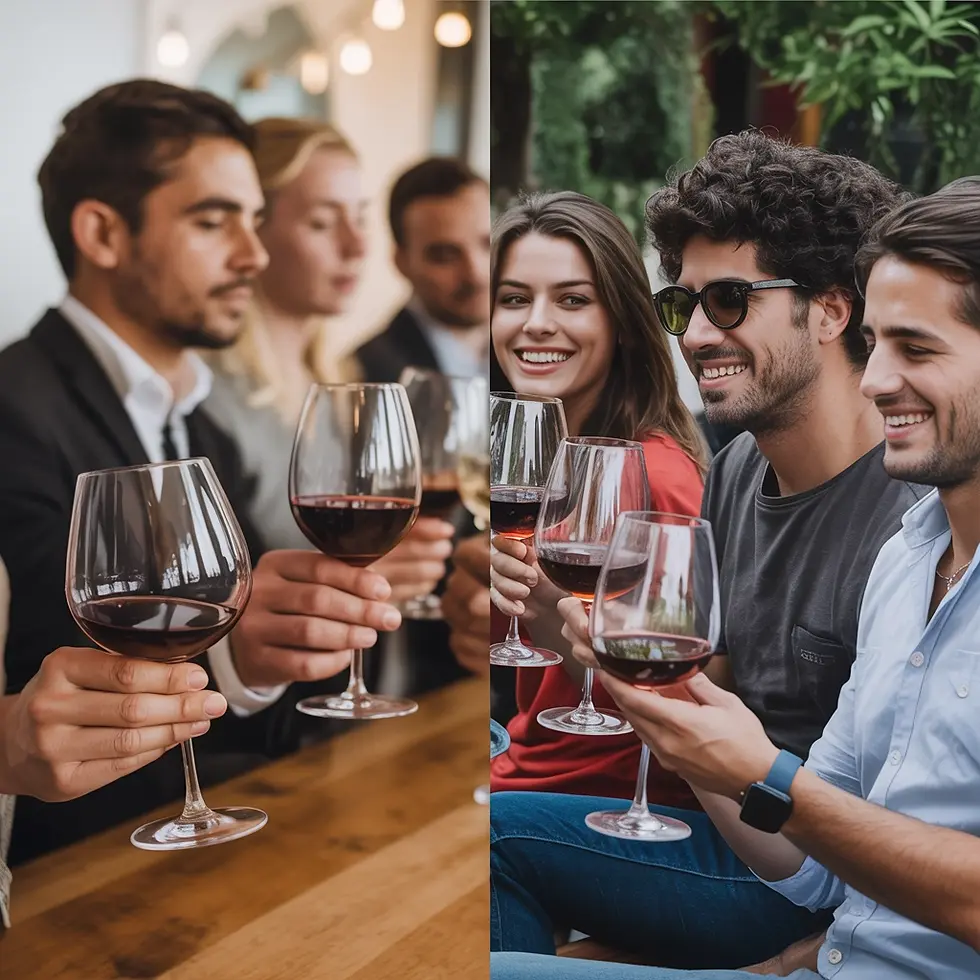Authenticity Over Perfection: Why Unfiltered Content Is Your Best Marketing Move This Year
- Lucas Vandenberg
- Jul 15
- 5 min read

The End of the Polished Era
Remember when social media was all about the perfect flat lay, the impeccably styled product shot, and captions that felt like they'd been edited by a committee? That era is officially over.
In 2025, authenticity isn't just a marketing buzzword—it's the price of admission for brands that want to stay relevant. Particularly in lifestyle industries like wine, where consumers are increasingly savvy and skeptical, the shift toward raw, unfiltered content represents both a challenge and an unprecedented opportunity.
At Fifty & Five, we've witnessed this transformation firsthand through our work with leading wine brands. The most successful campaigns now feature content that feels spontaneous, genuine, and human—a stark contrast to the meticulously curated feeds of years past.
Why Consumers Crave the Real
The numbers tell a compelling story: 82% of consumers say they're more likely to trust a brand that uses images of real customers in their marketing. Meanwhile, studies show authentic reviews increase conversion rates by up to 120%, and content perceived as genuine drives 3.2x greater customer lifetime value.
Why this dramatic shift? Digital fatigue has set in. After years of scrolling through idealized, filtered versions of reality, consumers are hungry for content that reflects their actual experiences.

"The modern consumer doesn't just want to be marketed to—they want to be related to," explains our Director of Content Strategy. "They can spot manufactured authenticity from a mile away, especially in an industry like wine where passion and personal experience are so central to the brand relationship."
This is particularly evident in our work with premium wine brands, where we've found that behind-the-scenes content showcasing the real people and processes behind wine production consistently outperforms glossy product photography in both engagement and conversion metrics.
The Authenticity Advantage: Wine Industry Leaders Show the Way
Some of the most compelling examples of authenticity marketing come from our partnerships with industry leaders who weren't afraid to strip away the pretense often associated with wine.
Take our collaboration with Kendall Jackson, for example. Rather than positioning wine as an exclusive luxury, their Kentucky Derby partnership embraced the joy and accessibility of the experience. By showcasing real fans enjoying Kendall Jackson wines in authentic Derby settings—complete with the occasional spill or imperfect photo—engagement rates soared 78% above benchmarks.
"When we stopped trying to make every piece of content look like it belonged in a glossy magazine and started capturing genuine moments, we saw an immediate spike in engagement," shares one of our long-standing wine clients. "Comments went from generic compliments to personal stories about similar experiences."
The Generational Imperative
This shift isn't merely stylistic—it's being driven by fundamental changes in who holds purchasing power. Gen Z, who now represent a significant and growing segment of wine consumers, demonstrate a particularly strong preference for unfiltered content:
They're 3.4 times more likely to engage with content they perceive as authentic
76% say they distrust brands that don't show "the real picture"
92% prefer to see actual customers using products over professional models

While millennials pioneered the authenticity movement, Gen Z has taken it to new heights, with their sophisticated media literacy making them especially sensitive to anything that feels staged or contrived. This generation isn't just influencing trends—they're redefining the fundamental relationship between brands and consumers.
For wine brands targeting younger consumers, this represents both a challenge and an opportunity. Those willing to show the less glamorous side of winemaking—the early morning harvests, the experimentation, the failures along with the successes—are seeing dramatically higher engagement from these coveted demographic segments.
From Polished to Personal: Practical Applications
So what does authentic content actually look like in practice? Based on our work with leading wine brands, here are the approaches yielding the strongest results in 2025:
1. User-Generated Content as the Centerpiece
The most successful wine brands are building campaigns around customer-created content rather than treating it as a supplement. Our PGA partnership with Kendall Jackson leveraged golf enthusiasts' natural inclination to share their experiences, creating a treasure trove of authentic moments that no staged photoshoot could replicate.
2. Behind-the-Scenes Access
Winery tours have always been popular, but digital behind-the-scenes content scales this experience to global audiences. From showcasing conversations with winemakers to documenting the harvest process in real-time, these glimpses behind the curtain build credibility and emotional connection.
3. Transparent Storytelling
Brands winning the authenticity game aren't just sharing polished success stories—they're talking about challenges, setbacks, and the learning process. When one of our wine clients openly discussed a difficult harvest year and how they adapted, engagement rates doubled compared to their typical content.
4. Employee Advocacy
Some of the most compelling authentic content comes not from marketing teams but from employees themselves. Winery staff, sommeliers, and even delivery drivers provide perspectives that resonate with authenticity precisely because they aren't crafted by marketing teams.
The Platform Evolution: Where Authenticity Thrives
Different platforms demand different expressions of authenticity, and knowing these nuances has been critical to our clients' success:
TikTok: The rise of this platform has been perhaps the strongest driver of the authenticity movement, with its emphasis on spontaneous, unfiltered content. For wine brands, casual educational content about wine pairings and terminology has proven especially effective here.
Instagram: While once the home of perfectly curated feeds, even Instagram has embraced authenticity through features like Stories and Reels that prioritize in-the-moment content over perfection.
LinkedIn: Even this professional platform has seen a shift toward more personal storytelling, with winery executives and wine industry professionals sharing candid insights about their business challenges and innovations.
The Authenticity Audit: How to Evaluate Your Content Strategy
If you're wondering whether your brand's content truly reads as authentic, ask these critical questions:
Does your content show the humans behind your brand?
Are you sharing both successes and challenges?
Does your visual aesthetic feel accessible rather than aspirational?
Are you featuring real customers prominently?
Would your content still work if it weren't perfectly lit, styled, or edited?
For wine brands specifically, consider whether your content demystifies rather than mystifies the wine experience. The days of positioning wine as an exclusive luxury accessible only to those "in the know" are fading. Today's most successful wine marketing makes consumers feel included in the conversation.
The Risk of Not Evolving
Brands clinging to overly polished aesthetics face significant risks. Beyond simply missing engagement opportunities, they may actively damage consumer trust. Research shows 71% of consumers have become skeptical of brands that appear "too perfect" in their marketing, suspecting everything from dishonest business practices to product quality issues.
This skepticism is particularly pronounced in the wine industry, where authenticity is increasingly tied to perceptions of quality and value. Wine consumers don't just want to know that a wine tastes good—they want to understand its story, its production process, and the real people who make it possible.
Conclusion: Authentic by Design, Not by Default
The shift toward authentic marketing isn't simply about being more casual or less careful with production quality. Rather, it requires an intentional strategy that places genuine connection at the center of every content decision.
At Fifty & Five, we've found that the brands most successfully navigating this shift are those that have built authenticity into their processes—not just their output. They're inviting customers into conversations, empowering employees to share their perspectives, and designing campaigns that celebrate rather than conceal the human elements of their brand experience.
As we move through 2025, the wine brands that will thrive are those that recognize authenticity not as a temporary trend but as a fundamental reset in the relationship between brands and consumers. In an industry built on passion, tradition, and sensory experience, there's perhaps no better time to embrace the power of keeping it real.
If you're ready to develop an authenticity-driven content strategy for your brand, connect with our team to learn how we're helping wine industry leaders transform their digital presence through the power of unfiltered storytelling.


Comments